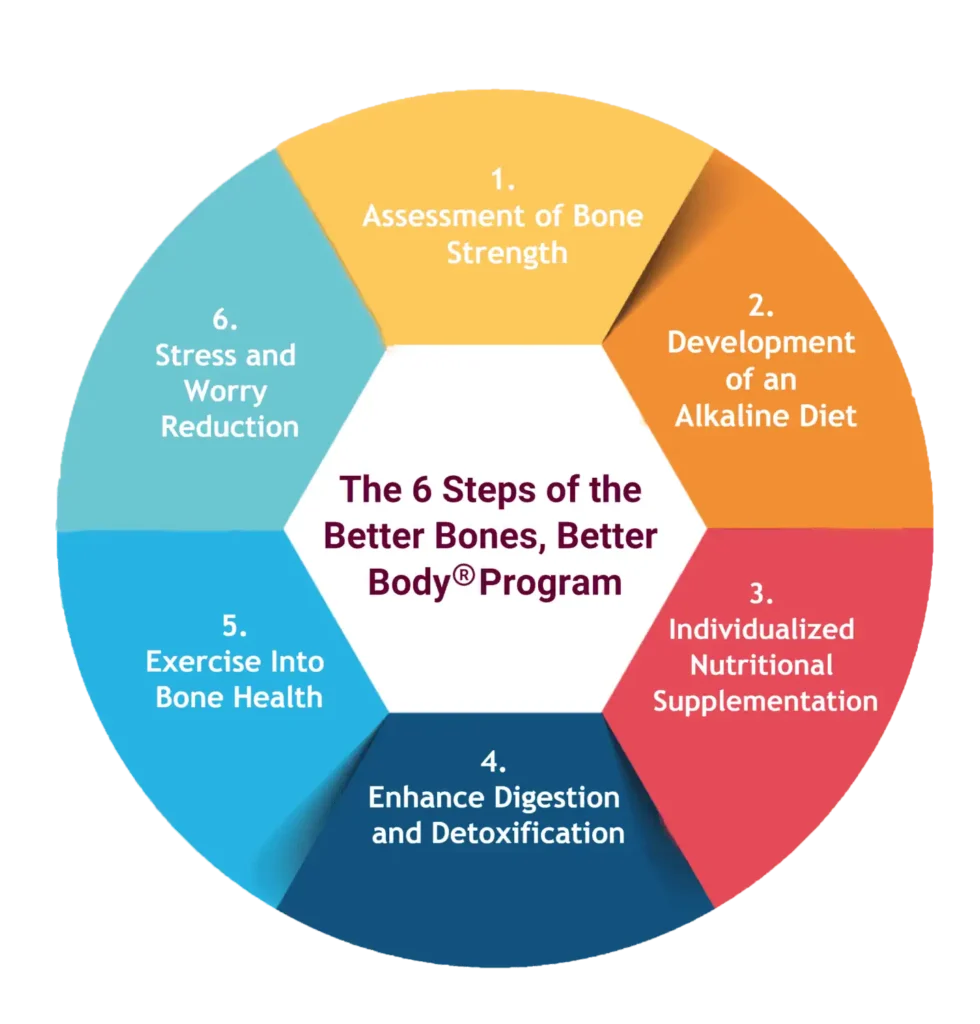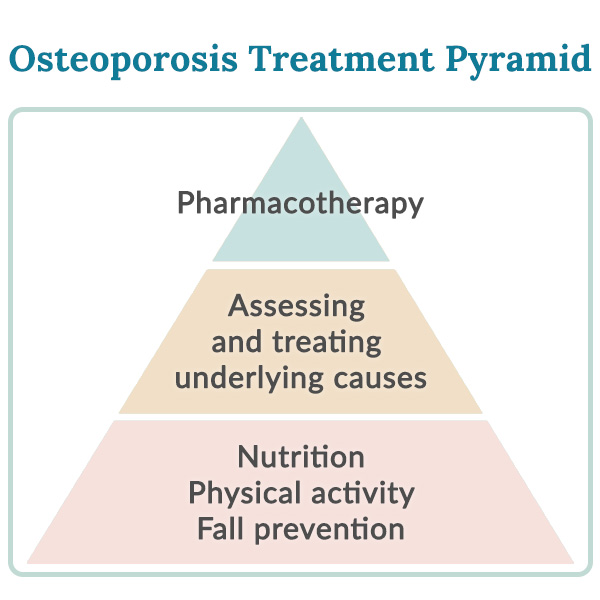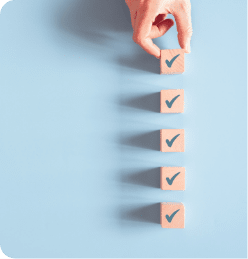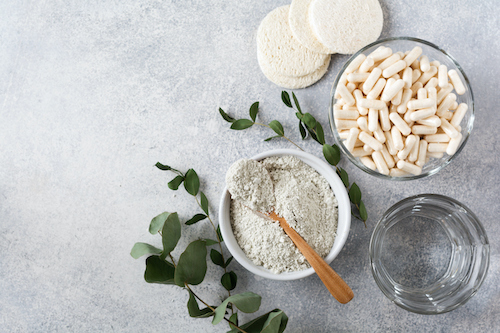Authored by Dr. Susan E. Brown, PhD
Like all animals, humans are designed with a skeleton meant to last a lifetime. Yet today, weak bones and unnecessary fractures have become all too common. In fact, almost half of all U.S. women over 50 will develop osteoporosis or osteopenia. And statistics show that one in three women and one in five men will experience an osteoporotic bone fracture. Every year, millions are prescribed bone drugs, despite their uncertain benefits and well-documented risks.

Is there a better way to preserve and rebuild the vibrant bone health nature intended us to have? Absolutely. I’ve had the privilege of helping thousands strengthen their bones, even after a diagnosis of osteoporosis. My Better Bones, Better Body® Protocol not only supports bone health naturally, but also enhances overall wellness by taking a whole-body approach.
I’m excited to introduce you to the six science-backed, holistic strategies that make up my Better Bones, Better Body® Protocol. These are 6 essential steps for naturally strengthening your bones and improving your overall health. Each one is important!
1. Assessment & testing for active bone loss and hidden risk factors
When DEXA scan results are lower than expected, many women don’t receive further testing, leaving the real cause of their bone health concerns a mystery. Instead, they’re prescribed bone drugs and never realize the real problem is low Vitamin D, hyperparathyroidism or even celiac disease.
That’s why my first step when working with any woman with bone health concerns is to dig deeper — further testing and detective work can reveal what’s really going on with your bones. Get a list of helpful tests to request from your provider.
2. Eat more alkalizing foods
Including more alkalizing foods in your diet can support your body in maintaining an ideal pH balance, which helps keep you in a more alkaline state. This is essential for health because when your body becomes too acidic, it struggles to buffer excess acid, potentially taking minerals like calcium from your bones to restore balance. By eating more alkalizing foods, you can reduce the demand on your body’s mineral stores, helping your bones and other systems function smoothly.
Foods that promote alkalinity include leafy greens, broccoli, cucumbers and root vegetables. These are rich in minerals like magnesium and potassium, which can aid in counteracting acidity. Opting for whole fruits, like apples and berries, also adds a gentle alkalizing effect while delivering antioxidants and other nutrients. Get my basics for starting an alkaline diet.
3. Tailored nutritional supplementation
Bone health depends on a steady supply of nutrients — 19 key bone-building nutrients, to be exact — but many people fall short of getting what they need. Achieving strong bones requires not only the right amounts of these essential vitamins and minerals but also a careful balance in forms that support alkalinity. Nutrients like calcium, magnesium and Vitamin D work together to maintain bone density and strength, while alkalizing forms help ensure these nutrients can be absorbed and utilized without depleting your body’s natural mineral reserves.
Find out more about how I formulate Better Bones Builder to give you the exact nutrients you need.
4. Improve digestion and absorption
Our bodies rely heavily on the food we consume and, more importantly, our ability to absorb those nutrients. Strong digestion is essential to breaking down foods effectively, allowing the body to draw out the vitamins, minerals and energy it needs to sustain healthy bones. However, when toxins like heavy metals and chemicals enter our systems, they can interfere with this process. These toxins may impair nutrient absorption and disrupt cell function, limiting the body’s ability to access critical nutrients for bone health.
Maintaining a healthy digestive system and minimizing toxin exposure are vital steps toward building and protecting strong bones.
5. Exercise to build bone health
Research reveals that bones respond dynamically to physical load, becoming stronger and denser in response to weight-bearing and resistance exercises. Activities like walking, jogging and strength training apply gentle stress to the bones, stimulating growth and mineralization. This process fortifies bone density and structure, making bones more resilient to fractures. By maintaining an active lifestyle, you can support both muscle and bone health, ultimately helping to protect against injury and falls as you age.
6. Stress reduction and emotional resilience
I have long observed the significant impact of chronic stress on bone health, and now research has clarified the exact mechanisms involved. Today, we know that ongoing stress activates the sympathetic nervous system, leading to the release of adrenal hormones like cortisol. High cortisol levels over time can interfere with the body’s ability to renew and maintain bone tissue, gradually depleting essential minerals and weakening bone density.
What this means is that stress management isn’t just beneficial for mental well-being — it’s also essential for sustaining strong, resilient bones. By incorporating practices to reduce stress, such as relaxation techniques, regular exercise and quality sleep, you can make a meaningful difference in supporting your long-term bone health.
Why the natural approach to bone health works
I developed these natural bone health protocols over 40 years ago, and they were later validated by the United States Surgeon General who agreed that nutrition and lifestyle modifications should be the first step before drug therapy. It’s exciting to see more people, from researchers to women like you, finally embracing these steps for building strong, healthy bones.

I hope the 6-step protocol has inspired you to take control of your bone health with confidence and optimism. The truth is, your body has an incredible ability to heal and strengthen itself when given the right support.
Remember, you don’t have to do this alone. Whether you’re just starting your bone health journey or looking for natural ways to improve your results, we’re here to guide you every step of the way. I’m so glad you’re taking these important steps for your health, and I’m excited to see the positive changes that lie ahead for you.
Let’s build stronger bones — and a stronger, healthier you — together!










